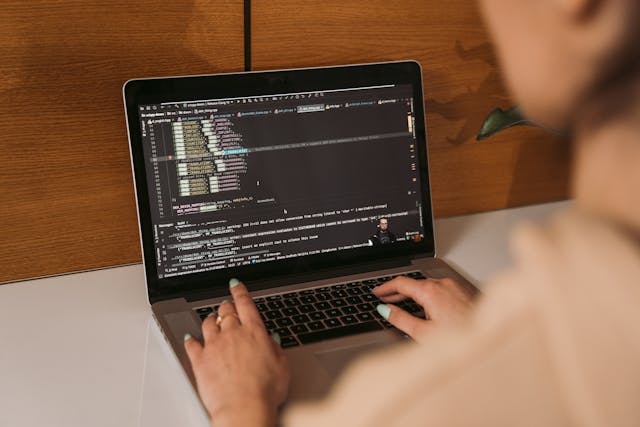Last Updated on October 8, 2024 by Richard Martin Linga
When it comes to boosting your website’s ranking, following an SEO checklist in the Philippines is key. I know that SEO can feel overwhelming, but it doesn’t have to be. In simple terms, SEO, or Search Engine Optimization, helps your website show up higher on search engines like Google. That means more people can find your business online. The right SEO steps can make a big difference.
Many people, including an SEO specialist in the Philippines, rely on a detailed checklist to ensure every important aspect of SEO is covered thoroughly and effectively. That is to say, these steps help ensure your website has the best chance of ranking well. This guide will walk you through the main points you need to follow. So, let’s break it down into simple steps you can use to improve your site’s SEO. After that, you can apply these ideas and start seeing results in no time.
SEO Basics Checklist

SEO stands for Search Engine Optimization. It’s the process of making your website show up higher on search engines like Google. In other words, SEO helps people find your website when they search for things related to your business. It’s important because better visibility means more visitors, which can lead to more customers.
Why Businesses in the Philippines Need SEO
In the Philippines, more and more people use the Internet to search for products and services. That is to say, businesses need to make sure they are visible online. Without proper SEO or the right SEO packages, your business might not show up on the first page of search results. Above all, being on the first page can help you reach more customers and beat your competitors.
Essential SEO Elements
Here are the SEO basics you need to focus on:
- Meta Tags: These are small pieces of information that tell search engines what your page is about. They help Google know if your page is useful.
- Meta Descriptions: These are short descriptions of your page that appear under your link in search results. In other words, it tells people what they’ll find on your page.
- Title Tags: These are the titles of your web pages. They should include your main keywords to improve search visibility.
By following these basics, you can make sure your website is ready for success.
On-Page SEO Checklist

On-page SEO is about improving things directly on your website to help it rank higher. That is to say, it focuses on making sure your content, headers, images, and URLs are easy for search engines to understand.
Optimizing Headers, Keywords, and URLs
- Headers: Use headings like H1, H2, and H3 to break your content into sections. These make it easier for both people and search engines to read. The main heading, or H1 tag, should include your primary keyword.
- Keywords: Make sure your main keyword is included in your content naturally. Don’t overdo it, though. This helps search engines know what your page is about without it feeling forced.
- URLs: Keep your URLs short and clear. Include keywords in them, like “SEO-checklist-Philippines,” to help with on-page optimization.
SEO-Friendly Titles and Meta Descriptions
- Titles: Craft simple, clear titles that describe what the page is about. For instance, if your page is about SEO, make the title say that.
- Meta Descriptions: Write short summaries for your pages. They should include keywords and tell people why they should visit your site.
Alt Text for Images
The alt text describes what your images are about. This helps search engines understand your images better. Also, it helps your page be more accessible to users with visual impairments.
By following this on-page optimization checklist, your site will be better prepared for search engines like Google.
Content Optimization Checklist

Content is super important for SEO. That is to say, search engines love websites with useful and fresh content. When you create good content, your website is more likely to rank higher. Above all, quality content keeps visitors on your page longer, which helps your SEO.
Creating High-Quality Content
- Be Valuable: Your content should help your readers. For instance, give them solutions or tips they can use. Don’t just fill your page with fluff.
- Be Unique: Avoid copying from other websites. In other words, make sure your content is original and brings new ideas or insights.
- Update Often: Search engines like websites that stay fresh. Therefore, add new content regularly to keep your site relevant.
Keyword Research for the Philippines
To succeed with an SEO checklist in the Philippines, use keywords that fit your audience. For example, find out what words people in the Philippines are searching for. Tools like Google Keyword Planner can help you do this.
Keyword Density and Readability
- Keep it Natural: Include your keywords, but don’t overstuff them. Aim for a keyword density of 1-2%, which means mentioning your keyword about 20-40 times in a 3,000-word article.
- Readability: Make sure your content is easy to read. Use short sentences and simple words. You can use tools like the Flesch Reading Ease score to check how easy your content is to understand.
By focusing on content, you’ll improve your site’s SEO and keep readers coming back.
Technical SEO Checklist

Technical SEO is about how well your website works behind the scenes. That is to say, it makes sure search engines can easily find, load, and understand your site. By focusing on these things, your site will perform better and rank higher.
Site Speed, Mobile-Friendliness, and Responsive Design
- Site Speed: Your website should load fast. If it takes too long, people will leave. Use tools like Google PageSpeed Insights to check your speed and fix any problems.
- Mobile-Friendliness: Many people in the Philippines use their phones to browse. Therefore, your site should work well on mobile devices. If your site isn’t mobile-friendly, it could hurt your rankings.
- Responsive Design: This means your site looks good on any device, whether it’s a phone, tablet, or computer. Above all, responsive design helps keep users engaged.
Optimizing for Core Web Vitals
- Loading Time: Make sure your pages load quickly.
- Interactivity: Ensure users can click buttons or links easily without delays.
- Visual Stability: Elements on your page shouldn’t shift around when loading.
Importance of SSL Certificates
An SSL certificate keeps your website secure. In other words, it protects your users’ data. Having SSL also helps your SEO because Google favors secure sites.
Site Structure and XML Sitemaps
- Site Structure: Simply organize your site so users and search engines can navigate it easily.
- XML Sitemaps: This is a map for search engines. It helps them find all your pages quickly.
Following this SEO checklist in the Philippines for technical SEO ensures your website runs smoothly and ranks higher.
Off-Page SEO Checklist

Off-page SEO is everything you do outside your website to help it rank better. That is to say, it’s about getting other websites to talk about your site. One of the best ways to do this is through link building by creating quality backlinks.
Importance of Backlinks
- Backlinks: These are links from other websites to your site. Getting backlinks from high-quality sites, especially Philippine websites, tells search engines your site is trustworthy. The more good backlinks you have, the better your chances of ranking higher.
Outreach Strategies for Backlinks
- Outreach: Reach out to local bloggers, businesses, or websites to ask if they’ll link to your content. This builds strong local connections. For instance, partnering with influencers in the Philippines can help grow your backlinks.
- Local Influencers: Find people in your industry who have a big following and ask them to share your content. In return, you can offer them something helpful, like content or exposure.
Social Signals and Online PR
- Social Signals: When people share your content on social media, it tells search engines your site is valuable. That is to say, the more shares, likes, and comments your content gets, the better your SEO.
- Online PR: Public relations online is about creating news or stories people will want to link to. Writing a press release about your business, for instance, can attract attention and backlinks.
By following this SEO checklist in the Philippines for off-page SEO, you can improve your site’s authority and search ranking.
Local SEO Checklist
Local SEO is important for businesses in the Philippines because it helps you show up in local search results. That is to say, if someone searches for your product or service near them, you want your business to be the first they see. This is especially true if you have a physical store.
Optimizing Google My Business
- Google My Business: Make sure your Google My Business listing is complete. Add your business name, address, phone number, and photos. Also, don’t forget to pick the right category and add your business hours.
- Local Keywords: Use keywords that include your city or region. This helps people nearby find your business.
Building Citations from Philippine Directories
- Citations: A citation is when your business information shows up on other websites, like local directories. For example, being listed in Philippine business directories will help your local SEO. Make sure the details are the same everywhere.
Importance of Customer Reviews and NAP Consistency
- Customer Reviews: Ask your customers to leave reviews. More positive reviews can boost your visibility in search results.
- NAP Consistency: Make sure your Name, Address, and Phone number (NAP) are exactly the same on all online platforms. That is to say, if your business details are different in one place, it can confuse search engines.
By following this SEO checklist in the Philippines for local SEO, you can attract more local customers and improve your rankings in local searches.
Mobile SEO Checklist

In the Philippines, most people use their phones to search the internet. That is to say, making sure your website works well on mobile devices is critical. If your site isn’t mobile-friendly, you could lose a lot of visitors, which hurts your SEO.
How to Ensure Your Site is Mobile-Friendly
- Responsive Design: Your website should adjust to fit any screen size, whether it’s a phone, tablet, or desktop. In other words, it should look good and work smoothly on all devices.
- Easy Navigation: Make sure buttons and menus are easy to click on a small screen. Also, your content should be easy to read without zooming in.
Impact on Local Search
- Local Searches: Many people search for businesses on their phones while they are out. If your site loads slowly or is hard to use on mobile, you may miss out on local customers.
Tools to Test Mobile SEO
- Google’s Mobile-Friendly Test: This free tool lets you check if your website is mobile-friendly. It tells you what needs fixing.
- PageSpeed Insights: Use this tool to check how fast your site loads on mobile devices. Speed is a big factor in mobile SEO.
By following this SEO checklist in the Philippines for mobile SEO, you’ll make sure your site works well on phones. Above all, this will help you rank better and keep mobile visitors happy.
SEO Tools Checklist
If you want to succeed with your SEO checklist in the Philippines, you need the right tools. That is to say, these tools help you find the best keywords, check your backlinks, and fix technical issues on your site.
Keyword Research Tools
- SEMrush: This tool helps you find the best keywords for your site. You can see what keywords your competitors are ranking for and how hard it is to rank for those keywords.
- Ahrefs: Ahrefs is great for keyword research, too. It also shows you which pages on your site are getting the most traffic. Above all, it helps you find high-performing keywords in the Philippines.
Backlink Analysis Tools
- Ahrefs: You can also use Ahrefs to check your backlinks. In short, backlinks are links from other sites to yours, and they help boost your SEO. Ahrefs lets you see who is linking to you and who you can reach out to for more backlinks.
- Google Search Console: This free tool shows you how Google views your site. It also helps you track which websites are linking to yours, making it great for backlink analysis.
Tools for Monitoring Philippine Search Trends
- Google Trends: This tool shows what people in the Philippines are searching for. That is to say, it helps you keep up with trends and pick the right keywords.
By using these tools in your SEO checklist in the Philippines, you’ll get the data you need to improve your website’s rankings and stay ahead of your competition.
Key Takeaway
Following this SEO checklist in the Philippines can help your website rank higher and attract more visitors. That is to say, focusing on the right keywords, optimizing your content, and making sure your site is mobile-friendly are crucial steps. Also, don’t forget about technical SEO and building backlinks to strengthen your online presence.
If all this seems overwhelming or you need extra help, you can always hire me to guide you through the process. In other words, I can help make sure your website is set up for success. Above all, SEO is not just about doing one thing right—it’s about doing many small things correctly over time. So, start working on your SEO checklist today, and you’ll begin to see real improvements.
FAQs
What is the SEO checklist in the Philippines, and why is it important?
The SEO checklist in the Philippines helps optimize your website for search engines, improving your visibility in the local market.
How often should I review my SEO checklist?
Review and update your SEO checklist every few months to maintain rankings and stay competitive.
Why is mobile optimization crucial in the Philippines?
Most users in the Philippines browse on mobile. A mobile-friendly site improves user experience and local SEO.
How can Google My Business improve local SEO?
Optimizing your Google My Business listing helps your business appear in local search results.
What are the best SEO tools for businesses in the Philippines?
SEMrush, Ahrefs, and Google Search Console are great tools for keyword research, backlink analysis, and performance tracking.
